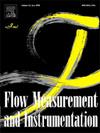CFD-based flow field study of Triple-crossed elliptical injector nozzle
IF 2.7
3区 工程技术
Q2 ENGINEERING, MECHANICAL
引用次数: 0
Abstract
As a third-generation electronically controlled fuel injection system, the high-pressure common rail injection system for diesel engines plays a crucial role in improving fuel efficiency and reducing exhaust emissions. In this paper, an in-depth analysis and improvement of the flow field characteristics of the injector nozzle is carried out, with a view to improving the flow characteristics of the injector nozzle and committing to the development of high-pressure injectors with high flow performance. This paper uses CFD to analyse and improve the original injector nozzle, establishes and verifies the fluid simulation model of SAC-type ultra-high-pressure injector nozzle, and improves the structure of the original injector nozzle, and designs a triple-crossed elliptical orifice-shaped injector nozzle. A comparative analysis shows that the cavitation intensity in the improved scheme is significantly reduced, and in addition, the average flow coefficient of the injector nozzles under the improved triple-crossed elliptical orifice is significantly better than the average mass flow rate of the original circular orifice scheme by about 57.82 % in the Inlet Pressure range of 100–200 MPa, and its average flow velocity is increased by about 25.86 %. Also the mass flow rate and velocity of the improved nozzle under 5–45 MPa back pressure was increased by about 46.01 % and 30.55 % respectively.
基于cfd的三交叉椭圆喷油器喷嘴流场研究
柴油机高压共轨喷射系统作为第三代电控燃油喷射系统,在提高燃油效率和降低尾气排放方面发挥着至关重要的作用。本文对喷油器喷嘴的流场特性进行了深入的分析和改进,以期改善喷油器喷嘴的流动特性,致力于开发高流动性能的高压喷油器。本文利用CFD对原喷油器喷嘴进行了分析和改进,建立并验证了sac型超高压喷油器喷嘴的流体仿真模型,并对原喷油器喷嘴的结构进行了改进,设计了三交叉椭圆孔型喷油器喷嘴。对比分析表明,改进方案显著降低了空化强度,并且在进口压力100-200 MPa范围内,改进的三交叉椭圆孔下喷油器喷嘴的平均流量系数显著优于原圆孔方案的平均质量流量约57.82%,平均流速提高约25.86%。在5 ~ 45 MPa背压下,改进后的喷嘴的质量流量和速度分别提高了46.01%和30.55%。
本文章由计算机程序翻译,如有差异,请以英文原文为准。
求助全文
约1分钟内获得全文
求助全文
来源期刊

Flow Measurement and Instrumentation
工程技术-工程:机械
CiteScore
4.30
自引率
13.60%
发文量
123
审稿时长
6 months
期刊介绍:
Flow Measurement and Instrumentation is dedicated to disseminating the latest research results on all aspects of flow measurement, in both closed conduits and open channels. The design of flow measurement systems involves a wide variety of multidisciplinary activities including modelling the flow sensor, the fluid flow and the sensor/fluid interactions through the use of computation techniques; the development of advanced transducer systems and their associated signal processing and the laboratory and field assessment of the overall system under ideal and disturbed conditions.
FMI is the essential forum for critical information exchange, and contributions are particularly encouraged in the following areas of interest:
Modelling: the application of mathematical and computational modelling to the interaction of fluid dynamics with flowmeters, including flowmeter behaviour, improved flowmeter design and installation problems. Application of CAD/CAE techniques to flowmeter modelling are eligible.
Design and development: the detailed design of the flowmeter head and/or signal processing aspects of novel flowmeters. Emphasis is given to papers identifying new sensor configurations, multisensor flow measurement systems, non-intrusive flow metering techniques and the application of microelectronic techniques in smart or intelligent systems.
Calibration techniques: including descriptions of new or existing calibration facilities and techniques, calibration data from different flowmeter types, and calibration intercomparison data from different laboratories.
Installation effect data: dealing with the effects of non-ideal flow conditions on flowmeters. Papers combining a theoretical understanding of flowmeter behaviour with experimental work are particularly welcome.
 求助内容:
求助内容: 应助结果提醒方式:
应助结果提醒方式:


